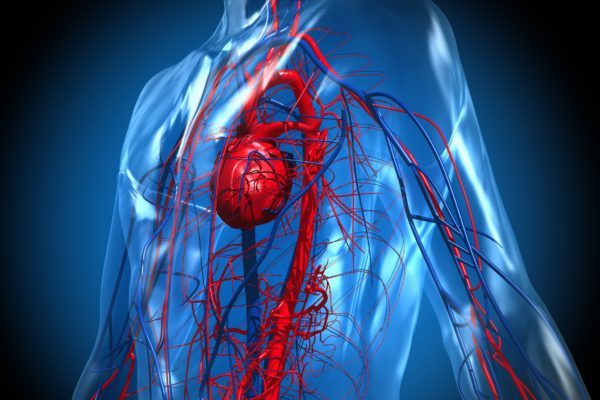Polycythaemia Vera (PV) means 'true (Vera) disease with an excess (poly) of blood cells (cytemia)' and the illness is also known under the names Vasquez disease, Vasquez-Olser, primary polyglobuly and primary erythrocytosis. PV is one of the myeloproliferative disorders that is characterised by the production of too many red blood cells. This is also known as uncontrolled cell growth. Normally this production is restricted, but in the case of PV, cells are continuously produced due to a mutation in a specific gene (called JAK2). Most of the patients do not only have too many red blood cells, but also suffer from too many white bloods cells and platelets.
Due to the large amount of red blood cells, the blood becomes thicker. This makes it less likely to flow through the small blood vessels leading to an increased risk of blood clots in the veins (venous thrombosis) or in arteries (arterial thrombosis). Two-thirds of PV patients also have an increased number of platelets (thrombocythaemia).
Polycythaemia vera is a rare disease with approximately 0.6–2.8 new patients per 100,000 European citizens each year. Although PV is more common in older patients, younger patients can also be affected by this disease. The average age at time of diagnosis diagnosis is between the 55 to 60 years, and is more common in men than in women.
The complaints experienced by patients with PV are caused by the increased thickness of the blood and increased number of platelets (thrombocytopenia). The symptoms can vary greatly between patients, from headaches, dizziness, heart complaints and bleeding to excessive perspiration and itching.
A serious complication of the increased thickness of the blood is thrombosis. This creates blood clots that can clog veins in the body. This increases the chance on a stroke (cerebral infarction), myocardial infarction, thrombosis (venous thrombosis) or pulmonary embolism. Problems with the blood coagulation are more common in people over 60, or those who have previously experienced blood clots.
The cause of polycythaemia vera remains unknown, although in 97% of the patients a mutation in the material of stem cells (mutation) is found. This so-called JAK2 mutation causes the uncontrolled growth and division of stem cells. This creates a surplus of blood cells, including the number of red blood cells. Some patients also suffer from an increase in white blood cells and platelets. A JAK2 test may be useful for classification and treatment.
In order to be able to diagnose polycythaemia vera, several studies can be performed:
Polycythaemia vera cannot yet be cured. However, with treatment, PV patients have a normal life expectancy. Complications as a result of the increased thickness of the blood are the most important risks. In some cases, some patients develop myelofibrosis and 5% acute myeloid leukaemia. However, with the right treatment the prognosis is pretty good.
Based on the symptoms and test results, patients are assigned into three groups:
For patients in the low-risk group, in most of the cases is chosen for watchful waiting. In the case of intermediary and high risk, the treatment focuses on combating complications and reducing complaints. The goal is to reduce the red blood cell count and thus reduce the risk of thrombosis.
Treatment may also consist of:




